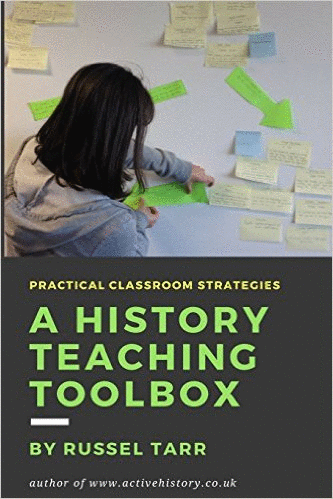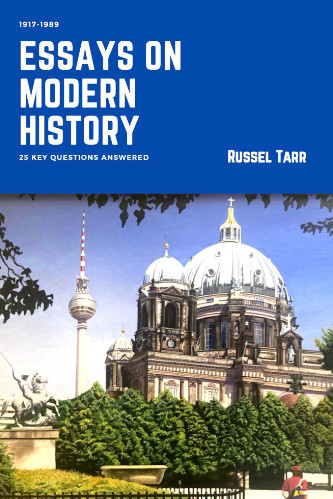Transform your history classroom
ActiveHistory provides educational, award-winning interactive simulations, decision-making games, self-marking quizzes, high-quality worksheets and detailed lesson plans for the school history classroom. All resources have been designed by full-time history teacher Russel Tarr.
An ActiveHistory subscription provides everything you need to construct and deliver a History course from start to finish for the entire 11-18 age range!
These consist not just of lesson plans, worksheets and teacher notes, but also multimedia lectures and interactive games and historical simulations ideal for remote learning and self-study.
World History teaching resources for the high school classroom: lesson plans, worksheets, quizzes and simulation games for KS3, IGCSE, IB and A-Level teachers.
Elizabeth I
The following materials can also be used to support a GCSE study of Elizabethan England, for example:
-
Early Elizabethan England, 1558-88 (Edexcel)
-
Elizabethan England, c1568-1603 (AQA)
Elizabeth I 1558-1566: Student Lecture Sheet | Teacher Lecture Notes
A student notes framework, and complete teacher lecture notes, to provide a brief overview of the early part of the reign.A. Why did the Spanish decide to invade England in 1588?
Factor 1. Elizabeth's Refusal to Marry | Teacher Presentation | Teacher Notes
"
Throughout her long reign, Elizabeth had a number of opportunities to marry, but she never did. She died unmarried and without children. So when she died, James VI of Scotland (the son of Mary Queen of Scots) became King James I of England too.
In this activity we will decide whether Elizabeth was right to refuse marriage by considering:
- The advantages and disadvantages for Elizabeth of getting married in general;
- The strengths and weaknesses of particular men she could have married."
Conclusion: Elizabeth's Refusal to Marry
Students are provided with a list of factors explaining Elizabeth's decision not to marry. These are then arranged into a Triangle 9 diagram, and students use their findings to answer the question "Was Elizabeth RIGHT not to marry?".
Sourcework: Elizabeth's Refusal to Marry
Students are given two sources from Elizabeth explaining her decision not to marry, and asked questions to test their understanding.
Factor 2: The Elizabethan Religious Settlement | Teacher Notes
It would be good to start this lesson with the clip from "Elizabeth" showing the burning of Latimer and Ridley to remind students of the divisions caused by religion - but of course it is a "15" certified film, so this is not possible...So, in this worksheet, students simply assess whether each part of the settlement was Catholic, Protestant or both. This is good revision of the Reformation unit, and gives students a sound understanding of what the Church of England stands for.
"Religion under the Tudors was a bit of a roller-coaster. Under Henry, the Church broke away from the Pope's control, but didn't change much otherwise. Under Edward, the Church became Protestant. Under Mary it became strongly Catholic. What would Elizabeth do?
- The table below highlights the questions that needed to be answered, and Elizabeth's answer to each one.
- For each one, decide if Elizabeth took a Protestant, a Catholic or a 'Middle Way' position (she used the Latin version of this phase herself - 'Via Media').
- Split 100% between the two options to represent how confident you are about whether this is Protestant, Catholic or Mixed.
- Then, write a sentence in the correct cell of the table underneath.
- Repeat for the others. Your teacher will tell you the answers afterwards so you can calcluate your score".
Homework / Extension: Students could be asked to produce an illustrated
depiction of the new Church designed to explain to the illiterate majority of
the population how it is set up. Alternatively, the class could be broken into
three groups, so that one group could produce a poster about the Elizabethan
Church, one could provide a poster about the Catholic Church, and one could
provide a poster about the Puritan Church. The teacher should close the lesson
by saying that "Both the Catholics and the Puritans (strong Protestants) hated
the settlement. The Pope promised that any Catholic who killed Elizabeth Tudor would
be guaranteed a place in heaven! As a result all Catholics were declared
possible assassins and would be executed for treason. Many hid in the famous
'Priest Holes' in country houses (e.g. Boscobel). Elizabeth also set up the
Secret Service under Francis Walsingham to root out spies!"
The Elizabethan Religious Settlement: Detailed notes, analysis and questions
A document originally designed for A-Level.
Factor 3: Elizabethan Pirates
A ripping yarn, which it would be a shame to overlook! Directly after this, I have to resort to history teacher stereotype and show students the Blackadder Episode: "Potato", which is a fantastic spoof of the voyages of discovery. By the reign of Elizabeth, Spain was a Superpower. Columbus had claimed the New World (America) for Spain. Spanish traders were bringing back massive amounts of Gold, Turkey, Tobacco and Potatoes. The English wanted a piece of the action. So they designed low, fast pirate ships which could easily outmanouevre the heavy Spanish galleons and lay underneath the range of their guns. Even more daringly, pirates like Sir Francis Drake launched attacks on wealthy Spanish ports too. This brought immense wealth for Elizabeth, who showered these pirates with honours. This infuriated King Philip of Spain!
Factor 4: The issue of Mary, Queen of Scots | Video on the Babbington Plot | Worksheet to accompany the Video
A fourth reason why the Spanish decided to invade England in 1588 was connected to Mary, Queen of Scots. Mary was a Catholic cousin of Elizabeth (her mother was Henry VIII's sister). Catholics all across Europe wanted her to replace Elizabeth as Queen of England. Students consider the life and actions of Mary, and decide for each piece of evidence whether she deserves to be executed, imprisoned or freed. This feeds into a lively class debate and verdict. Students then learn how Elizabeth actually dealt with Mary by watching a video. They could make notes on Tom Phillips, Al-Kindi, Anthony Babbington and Francis Walsingham.
Conclusion: To what extent was Elizabeth I to blame for Spain's decision to invade England in 1588? - Essay Instructions and Markscheme
B. Why did the Armada Fail?
EITHER: Option 1 - Running Dictation Exercise: The Spanish Armada
Students have to scribble down as much information as they can from the interactive news feed, then use it to
(a) Produce a biased newspaper report from either a Spanish or an English
perspective in three sections - cause, course, consequences AND / OR:
(b) Produce a written piece deciding whether the Spanish Armada failed due to (i)
Luck, (ii) English Skill or (iii) Spanish Mistakes
Note: It is a good idea to brainstorm some "good" and "bad" words on the
board prior to starting the written report so that students don't keep repeating
the same points. After the reports are finished, you can then have a "knockout"
competition where each student has to give a "good" word in turn, without
repetition or hesitation. Students sit down when they are "out" and the winning
student gets a merit. The same game can be played for "bad" words. It's a nice
way of building up vocabulary!
OR: Option 2 - Biased Account Exercise: The Spanish Armada
Students are provided with an objective narrative account of the Spanish Armada. Group 1 will work on the first notepad to create a biased account from an ENGLISH perspective. Group 2 will work on the second notepad to create a biased account from an SPANISH perspective.
Written and Audio-Visual Source Analysis: The Tillbury Speech
At the time of the Armada, Elizabeth rode to the south coast and delivered a famous speech to her troops. This speech is largely responsible for Elizabeth's reputation. But, as you are about to find out, we don't actually know for certain what she really said - and historians and filmmakers ever since have deliberately tried to confuse us further. How? Why?
C. Portraits as Propaganda
Portraits as Propaganda: Symbolism in Picture Sources
This activity build on well from The Ambassadors and the Tudor Portrait Mystery Exercises. Students consider the tools used by artists to represent different policies, emotions and personality traits in individuals, using the famous "Armada Portrait" as a starting point. They then use what they have learned to produce their own colourful "Royal Portrait" of themselves, which can then be used for display purposes. This worksheet comes complete with a link to my interactive Prezi presentation on Elizabethan portraits which students can use for inspiration:

D. Conclusions
How successfully did Elizabeth deal with the problems of her reign?
In this exercise, students will reach a final judgement about Elizabeth I by writing an essay.
In this way, they will:
- Develop their ability to see the ‘big picture’ and to connect factors together
- Consider how Elizabeth’s rule has affected such things as:
- The perception of women as the equals of men
- England’s unique religious culture and its impact on places like the USA
- England’s long-term relations with Scotland and Ireland
- England’s long-term relations with Spain
End of Unit Interactive Tests on Elizabeth I

© 1998-2025 Russel Tarr, ActiveHistory.co.uk Limited (Reg. 6111680)
1 Torrin Drive, Shrewsbury, Shropshire, SY3 6AW, England
Privacy Policy | Contact






